While Sundance is a regular little town in Wyoming with a sideline tourist business, Keystone is a tiny town in South Dakota that seems to exist to provide accommodations, food, and entertainment for tourists visiting the surrounding sites. We can almost (but not quite because of a few treetops) see the faces of Mount Rushmore from our hotel room. This is also a good central location for Wind Cave National Park, Jewel Cave National Monument, and Crazy Horse. Right in town you can see reptile gardens, zip lines, giant slides, mountain gondola rides, and a wax museum of all the presidents through President Biden.
It was a short drive from Sundance to Keystone and we could not get into the hotel until 2:00 p.m. so we stopped at Mount Rushmore since it was so close. I realized that the last time I visited there was the 4th of July of 2021. Today it is Memorial Day. That’s a couple of very appropriate days to visit Mount Rushmore. We picked up our Memorial Day Poppies, braved the light rain and chill and the small crowd of visitors, and walked path of the state flags to get to the monument.
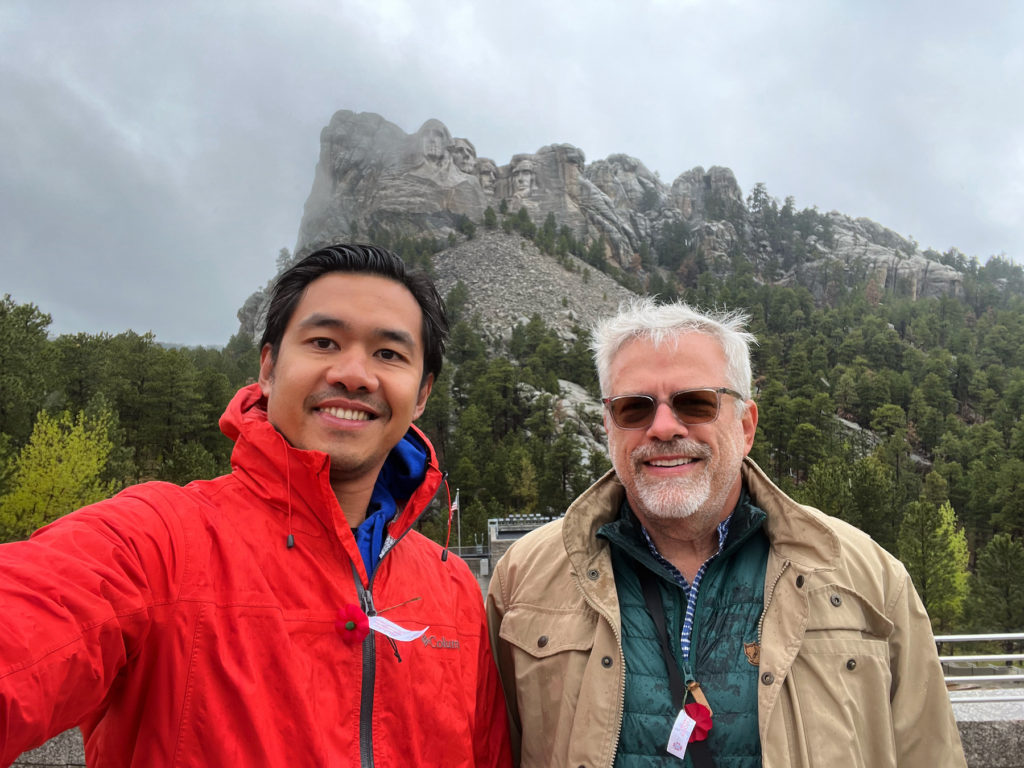
We spent less time in the park this visit but we snapped a few pictures and got our National Parks passport book stamped.
The main reason that we’re in Keystone is to see two caves in the National Parks and Monuments system. The first one, which we headed to as soon as we checked in, is Wind Cave, which was established in 1903 and was the first cave to be established as a National Park anywhere in the world.
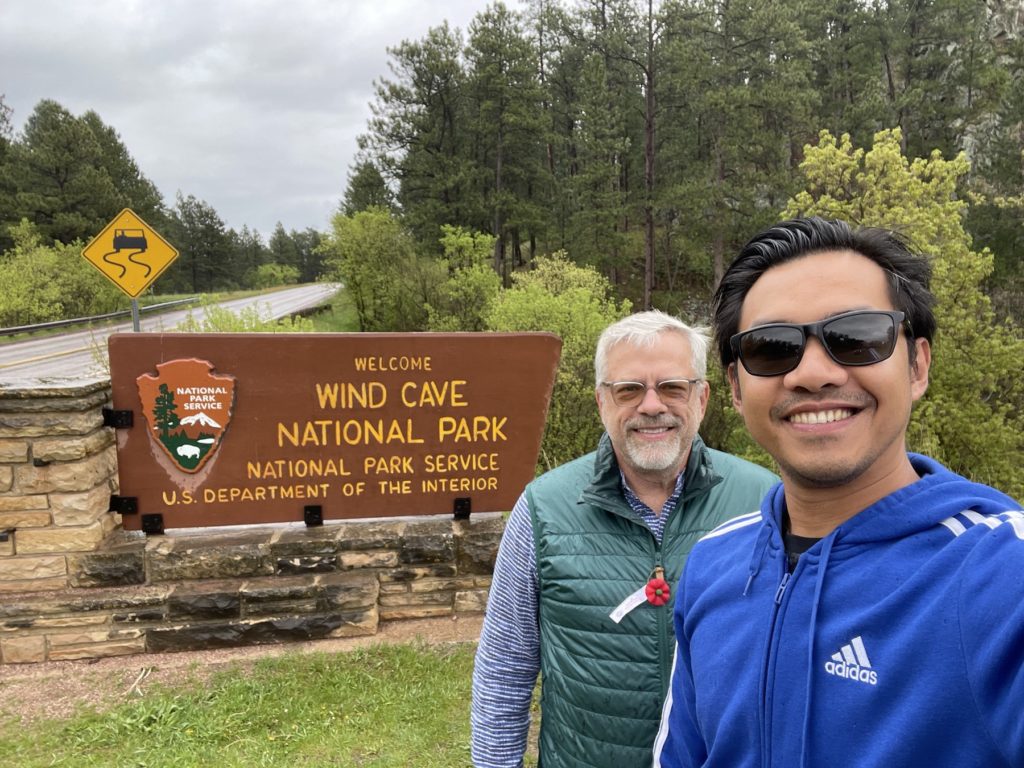
Wind Cave is the seventh longest cave in the world with over 150 miles of caverns explored so far. It is also known to have 95% of the world’s calcite boxwork. We chose to do the Natural Entrance tour, which starts near, you guessed it, the natural entrance of the cave. The tour is about 1 kilometer long and ends at the elevator room after we descend about 300 feet throughout.

Boxwork is basically calcite fins that are the remains of lots of changes over time. I can’t explain it better, so go here if you’d like to understand a little more. However, I can show you a couple of the best examples in photographs.
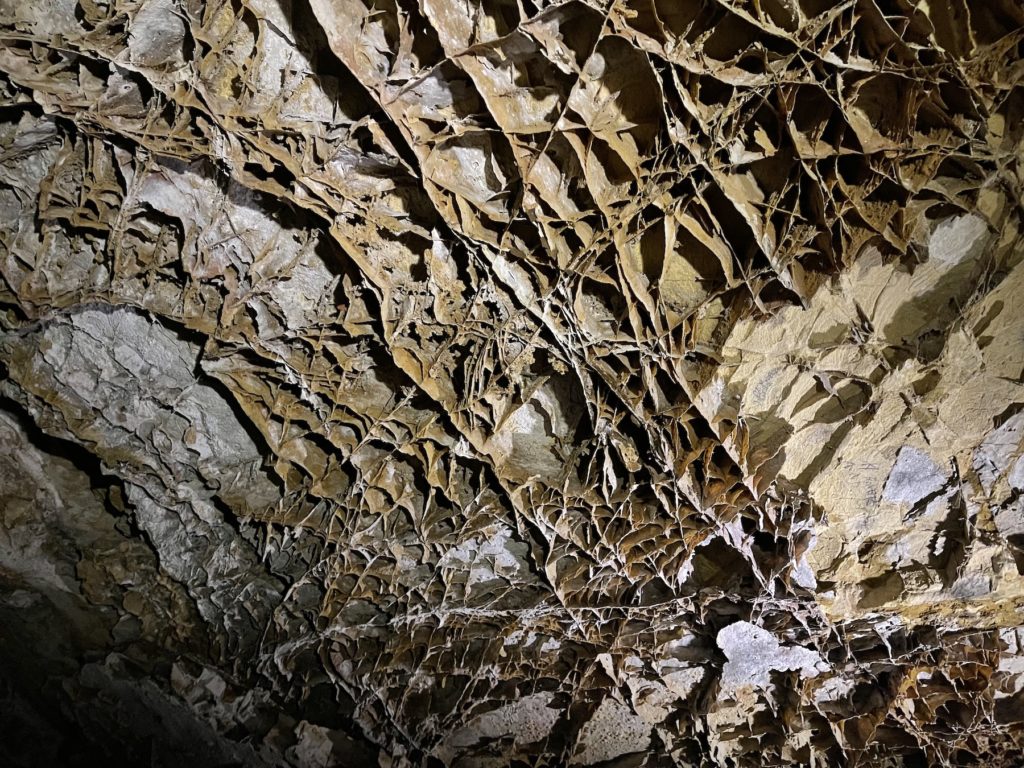
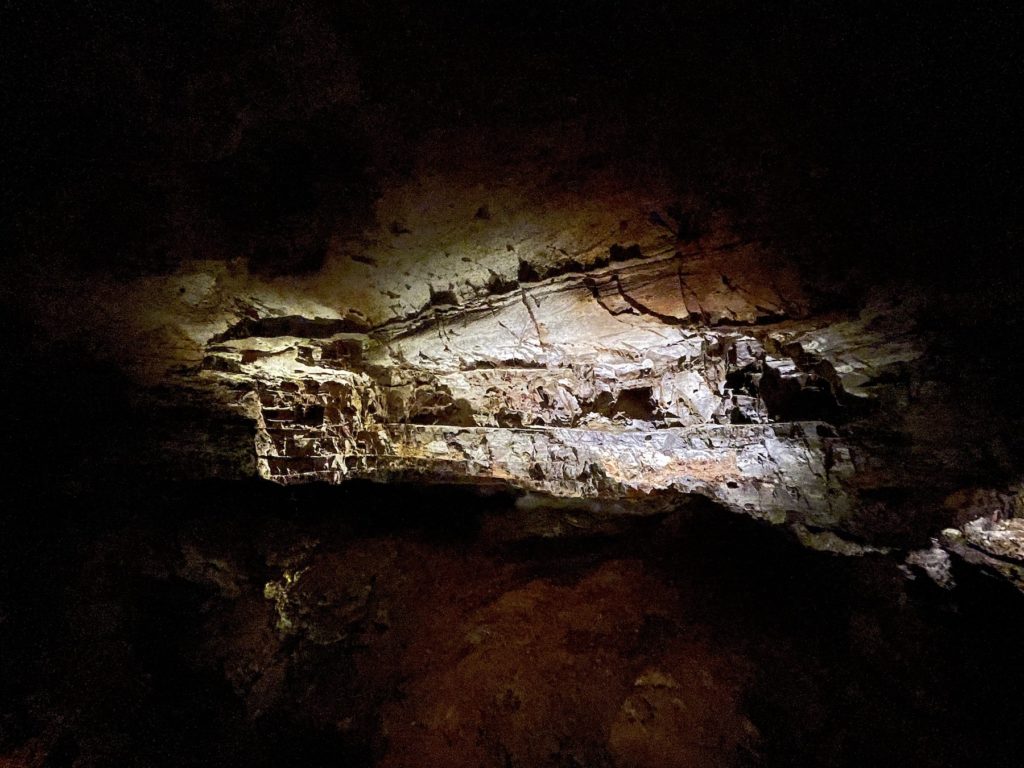
Wind Cave has a history of being a sacred site to the Lakota, Native Americans who live in the Black Hills region of South Dakota. They spoke of a hole that blew air and the entrance and area are part of their ancestral stories of creation and the beginning peoples. It is an amazing site and well worth the time if you have any interest in geology, history, and the still unexplored areas that are left on earth.
The day after Wind Cave we had reservations for a tour of an even longer cave, Jewel Cave.
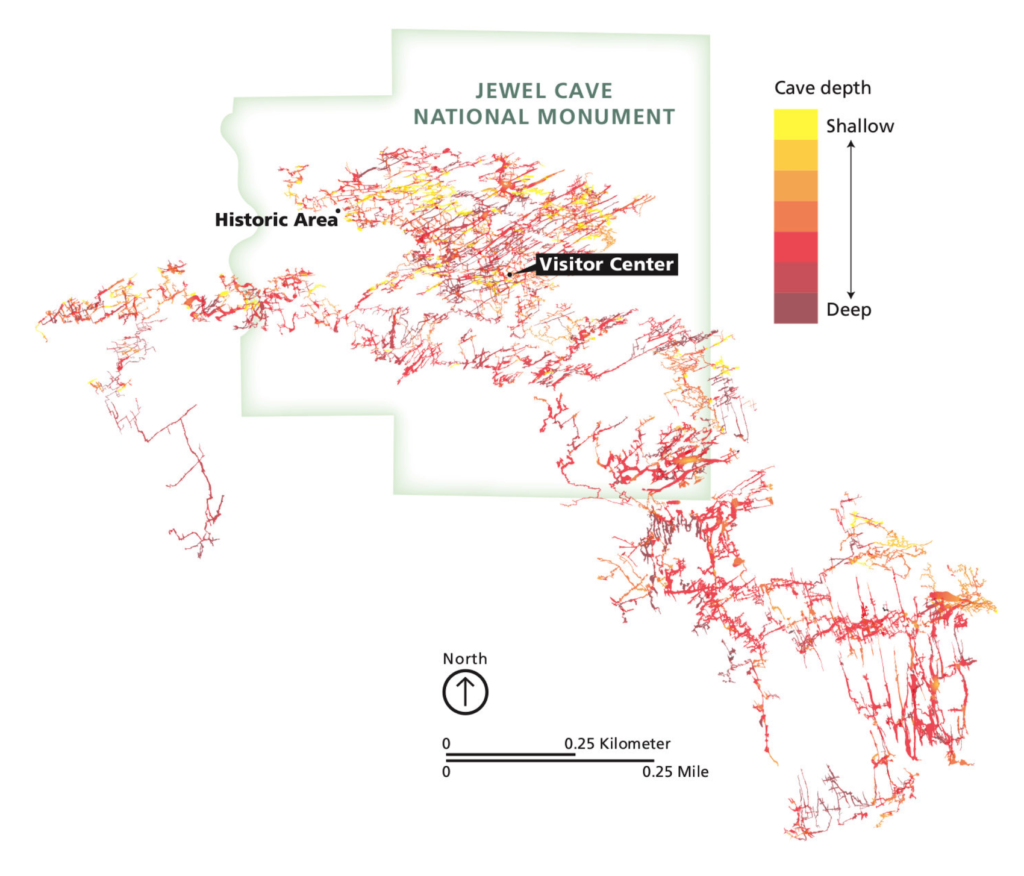
Jewel Cave National Monument was established in 1908 and up until 1959 only two miles of the cave were documented. It is currently the third longest cave in the world with more than 200 miles of explored caverns. In 1959 a married couple fell in love with caving in Jewel Cave and spent the next twenty years exploring it and mapping more than 64 miles. When they retired in 1979 the mapping continued and continues through today. You can see from the map above that the currently known cave area now expands way beyond the original site dedicated as a National Monument. I could not find too much information about any efforts to increase the size of the monument, but I hope it is on someone’s radar to keep it safe.
We booked Jewel Cave’s scenic tour, which is a half-mile loop including 734 steps. It is paved trails and stairs the entire way but is considered moderately strenuous primarily because of the stairs. During the tour we saw a lot of the calcite crystals that the cave is famous for called nailhead spar and dogtooth spar. They coat the walls about six inches thick almost everywhere and there are spots where they have broken and sparred off so you get an even better feeling for their formation.
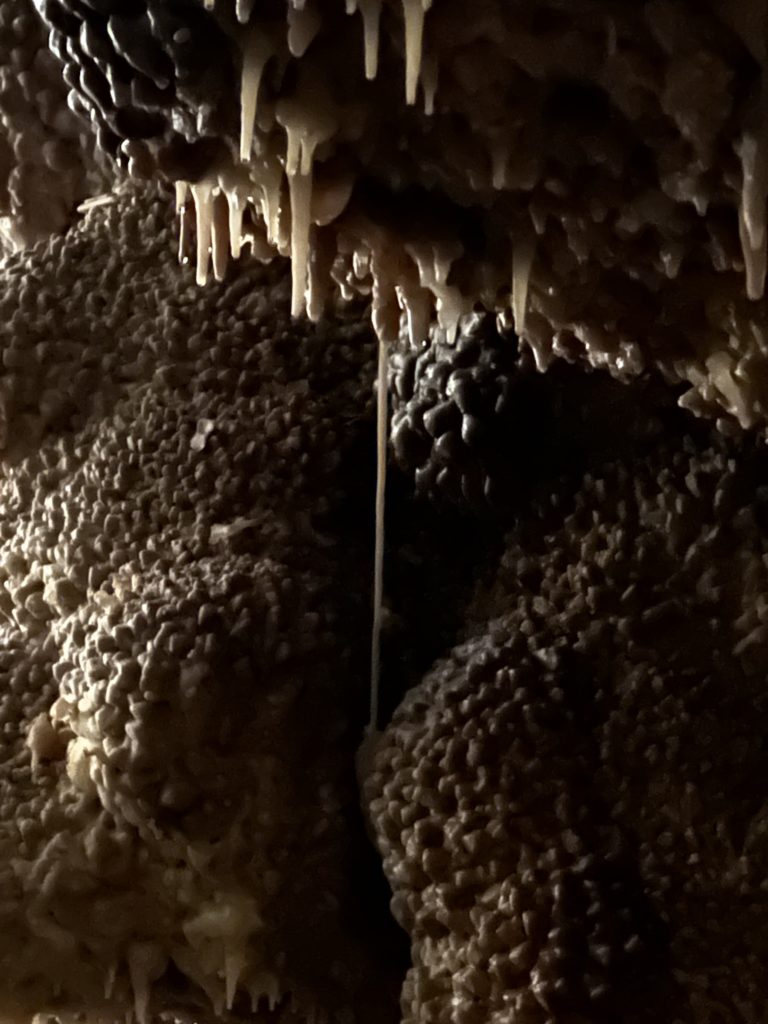
The above picture is a great example of dog tooth spar as well as hollow tube stalactites. The longest tube in the center is a stalactite that goes all the way to the ground as a stalagmite as well and is then called a pillar or column.
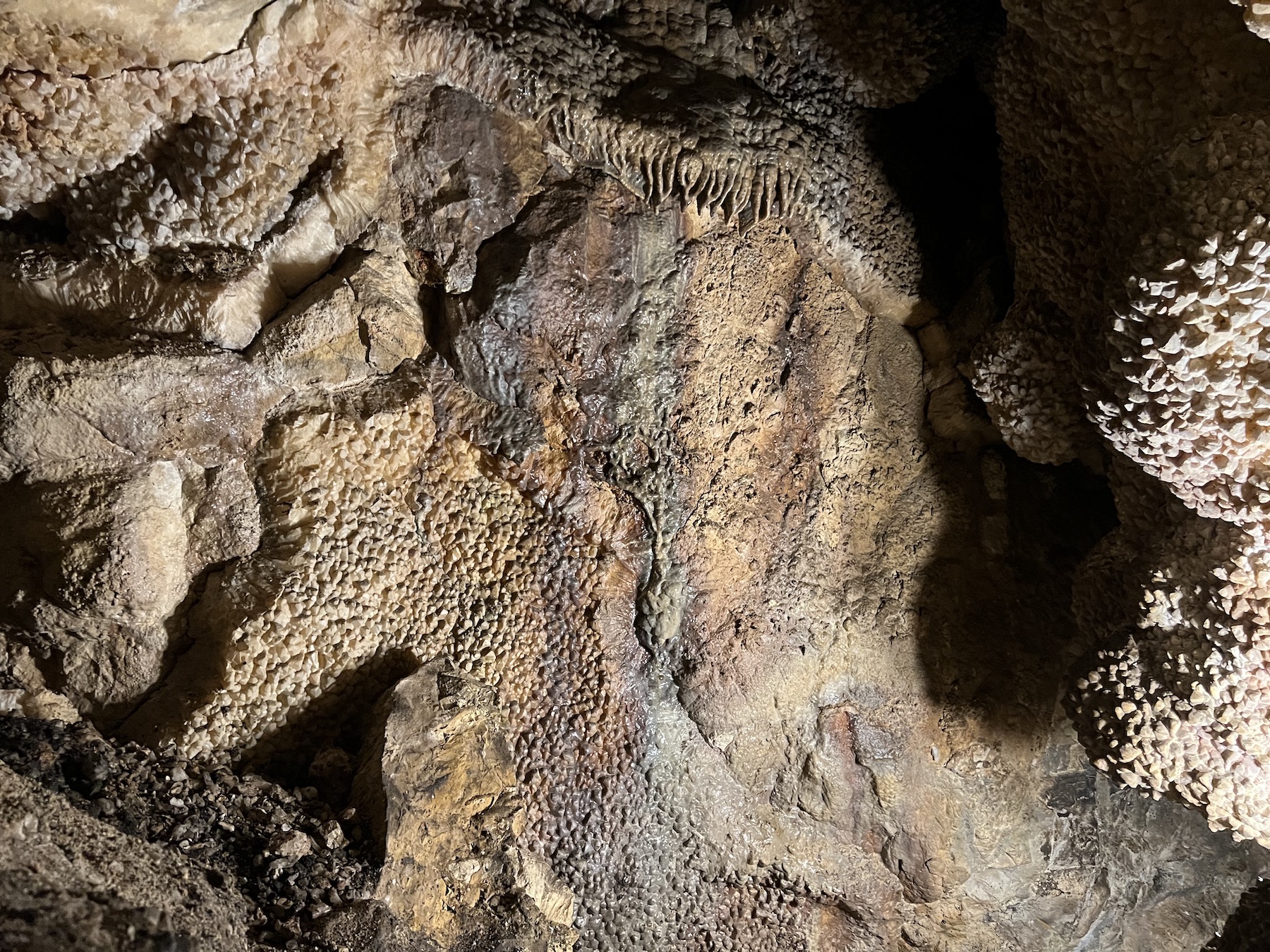
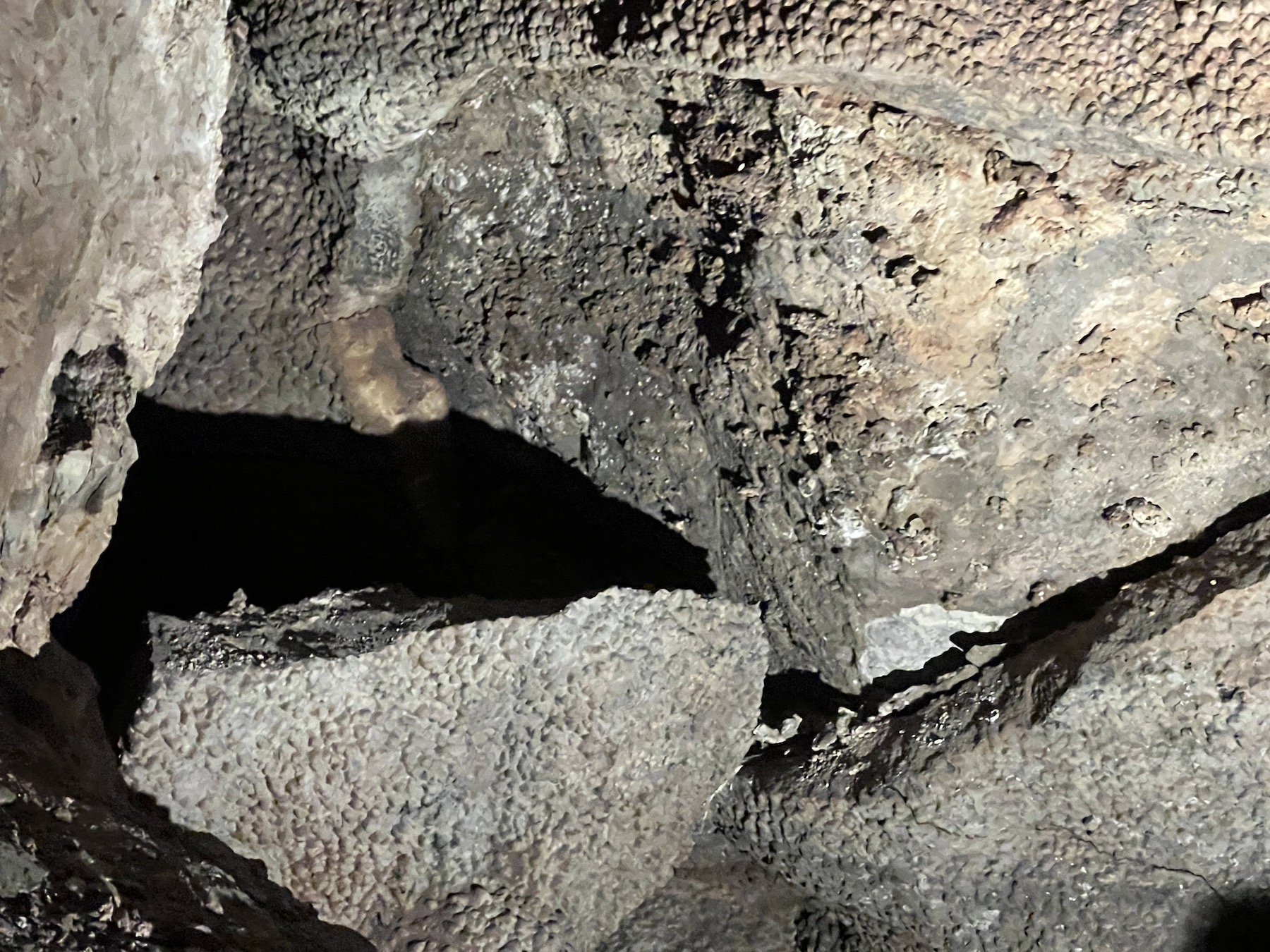
Above are two pictures of the calcite crystal formed all throughout the cave. These two pictures also show the calcite breakdown where the layer delaminates from the stone and falls off (which we were told happened several million years ago). Another example found in Jewel Cave is Flowstone and drapery. Flowstone occurs when water rich in calcium carbonate flows along the walls or floor of a cave leaving behind layers of calcite. It can be an eerie affect.
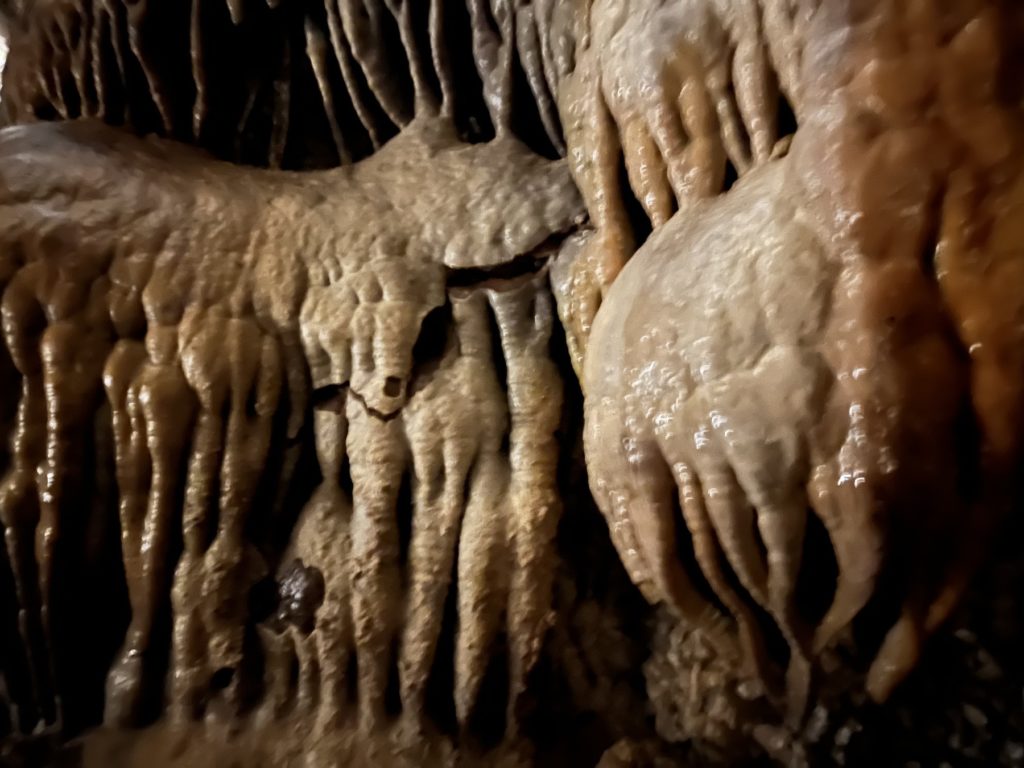
Jewel Cave was the third cave we visited on this trip (remember Cave of the Mounds in Wisconsin) and I really got a better education on the different types of caves, different types of chemistry that form the interiors, and the amazing sizes of these three caves. It made both of us put these additional and fantastic caves on our to-do list: Son Doong Cave, Vietnam; Mammoth Cave, Kentucky; New Athos Cave, Georgia (Country of); Sistema Dos Ojos, Mexico. There are a lot of different measurements for caves including biggest, longest, deepest, etc and these four are top of the lists. Has anyone ever been to any of these? Have any comments?
The last two posts are coming up…Badlands and MinuteMan Missiles and then Pipestone. Hang in there and thanks for following!